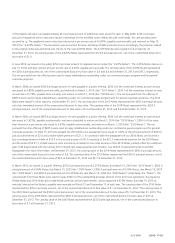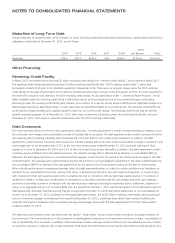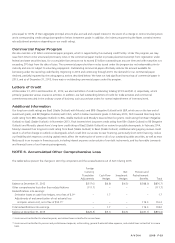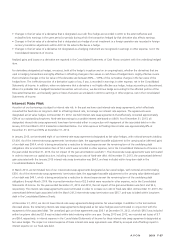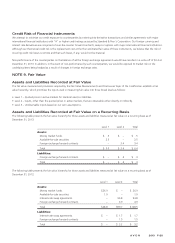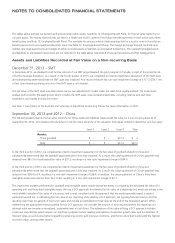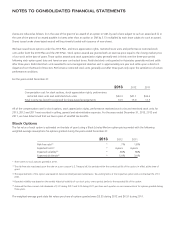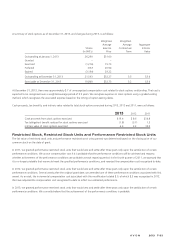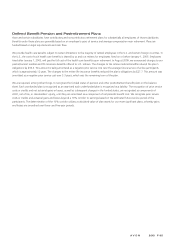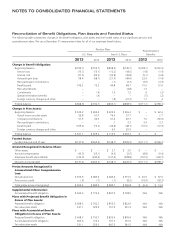Avon 2013 Annual Report Download - page 96
Download and view the complete annual report
Please find page 96 of the 2013 Avon annual report below. You can navigate through the pages in the report by either clicking on the pages listed below, or by using the keyword search tool below to find specific information within the annual report.
NOTES TO CONSOLIDATED FINANCIAL STATEMENTS
NOTE 8. Financial Instruments and Risk Management
We operate globally, with manufacturing and distribution facilities in various countries around the world. We may reduce our exposure to
fluctuations in the fair value and cash flows associated with changes in interest rates and foreign exchange rates by creating offsetting
positions through the use of derivative financial instruments. If we use foreign currency-rate sensitive and interest-rate sensitive instruments
to hedge a certain portion of our existing and forecasted transactions, we would expect that any gain or loss in value of the hedge
instruments generally would be offset by decreases or increases in the value of the underlying forecasted transactions. As of December 31,
2013, we do not have any interest-rate swap agreements.
We do not enter into derivative financial instruments for trading or speculative purposes, nor are we a party to leveraged derivatives. The
master agreements governing our derivative contracts generally contain standard provisions that could trigger early termination of the
contracts in certain circumstances, including if we were to merge with another entity and the creditworthiness of the surviving entity were to
be “materially weaker” than that of Avon prior to the merger.
Derivatives are recognized on the balance sheet at their fair values. The following table presents the fair value of derivative instruments
outstanding at December 31, 2013:
Asset Liability
Balance Sheet
Classification Fair Value
Balance Sheet
Classification Fair Value
Derivatives not designated as hedges:
Foreign exchange forward contracts Prepaid expenses and other $ 3.4 Accounts payable $ .3
Total derivatives not designated as hedges $ 3.4 $ .3
Total derivatives $ 3.4 $ .3
The following table presents the fair value of derivative instruments outstanding at December 31, 2012:
Asset Liability
Balance Sheet
Classification Fair Value
Balance Sheet
Classification Fair Value
Derivatives designated as hedges:
Interest-rate swap agreements Other assets/
Prepaid expenses and other
$ 93.1 Other liabilities $ –
Total derivatives designated as hedges $ 93.1 $ –
Derivatives not designated as hedges:
Interest-rate swap agreements Other assets $ 1.7 Other liabilities $ 1.7
Foreign exchange forward contracts Prepaid expenses and other 4.9 Accounts payable 1.5
Total derivatives not designated as hedges $ 6.6 $ 3.2
Total derivatives $ 99.7 $ 3.2
Accounting Policies
If applicable, derivatives are recognized on the balance sheet at their fair values. When we become a party to a derivative instrument and
intend to apply hedge accounting, we designate the instrument, for financial reporting purposes, as a fair value hedge, a cash flow hedge,
or a net investment hedge. The accounting for changes in fair value (gains or losses) of a derivative instrument depends on whether we had
designated it and it qualified as part of a hedging relationship and further, on the type of hedging relationship. We apply the following
accounting policies:
• Changes in the fair value of a derivative that is designated as a fair value hedge, along with the loss or gain on the hedged asset or liability
that is attributable to the hedged risk are recorded in earnings.





